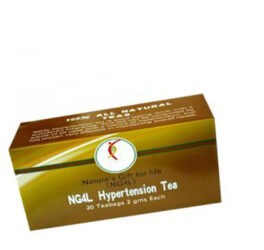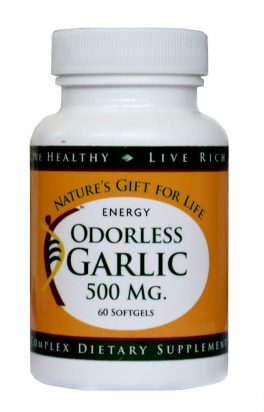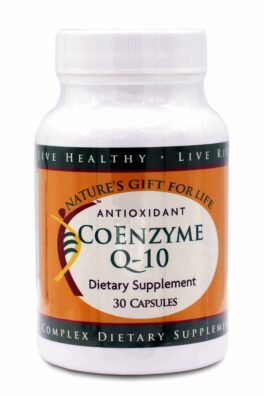Hypertension
DOCTORS RECOMMENDED PRODUCTS
-
Hypertension
Hypertension Tea (Hypertension)
0 out of 5(0)Benefits of this product for Hypertension
- Contain hypotensive (blood pressure-lowering) herbs including Hawthorn berries, which are high in proanthocyanidins (powerful antioxidant flavonoids).
- Helps in the treatment of essential hypertension
- Helps to prevent complications associated with high blood pressure
- Promotes the elimination of excess cholesterol by the liver
- Improves blood circulation
>>>Read More
SKU: n/a5,990CFA - Contain hypotensive (blood pressure-lowering) herbs including Hawthorn berries, which are high in proanthocyanidins (powerful antioxidant flavonoids).
-
Hypertension
Odorless Garlic (Hypertension)
0 out of 5(0)
Benefits of this product for Hypertension- Has the ability to lower blood pressure
- A unique food for cardiovascular support, especially in terms of chronic degenerative cardiovascular conditions
- Helps prevent heart disease by lowering homocysteine levels
>>>Read More
SKU: n/a10,160CFA - Has the ability to lower blood pressure
-
Hypertension
Co-Enzyme Q10 (Hypertension)
0 out of 5(0)Benefits of this product for Hypertension
- Helps improve the function of blood vessel walls, thus contributing to the regulation of blood pressure
- CoQ-10 has been credited with saving many people from congestive heart failure when other drugs have failed
>>>Read More
SKU: n/a15,090CFA
What is high blood pressure, and why does it happen?
Blood pressure is a measure of the force of blood as it passes through the arteries. To sustain life, blood must not only be kept circulating, but it must also circulate at an appropriate pressure. That pressure depends on the output from the heart, resistance within the blood vessels, the volume of the blood in the body, and distribution of the blood to various organs. Generally, a blood pressure reading of 120/80 or less is considered healthy. Hypertension is defined as a state of persistent abnormally high blood pressure.
High blood pressure is divided into two categories:
Primary Hypertension – high blood pressure that is not due to an underlying health problem.
Secondary Hypertension – high blood pressure that is a direct result of medications or an underlying health problem
Exact causes cannot always be determined, but there are some factors known to increase blood pressure including: obesity, heredity, diet, water retention, alcohol consumption, smoking, sedentary lifestyle, stress, and excessive stimulant use. Hypertension is often linked to other health conditions such as: atherosclerosis, arteriosclerosis, kidney malfunction, diabetes, hyperthyroidism, and adrenal tumors. Hypertension is a rapidly growing health concern, but unfortunately many people are not aware of it:
• One out of every five American adults, and one out of every six African adults struggle with high blood pressure.
• The incidence of high blood pressure is higher in blacks and the elderly.
• Hypertension is a “silent killer.” There are often no symptoms until serious complications develop.
Monitoring is the first step to deal with high blood pressure. Blood pressure is measured with a soft inflatable cuff, which is wrapped around the upper arm and inflated. Two readings are made – the systolic and the diastolic pressure.
Systolic pressure is measured when the pressure from the cuff causes the pulse in the lower arm to stop. Diastolic pressure is determined when the cuff is deflated and the blood is flowing freely once again.
Symptoms and complications of hypertension
One of the most dangerous aspects of hypertension is that there are often no physical symptoms. You may not know that you have it. In fact, nearly one-third of people who have hypertension don’t know it. In most cases it is diagnosed during a routine blood pressure measurement. In cases of very high blood pressure, there can be some symptoms, but they vary from one person to another.
Some people report to have experienced pulsating headaches (in the morning, in the middle or back of the head), fatigue, dizziness, tinnitus, blurring of vision, and facial flushing. One of the misconceptions of hypertension is its association with stress, mental tension and anxiety. These conditions may affect the flow of the blood but they cannot, on their own, result in ongoing high blood pressure. However, severe
and accelerated hypertension is closely associated with somnolence, confusion, red eye, nose bleeding, dyspnea, visual disturbances, nausea, and vomiting.
Uncontrolled or poorly treated high blood pressure has negative effects on the heart, the brain, the kidney and the eyes. One of the most serious health problems related to untreated high blood pressure is atherosclerosis, which contributes to coronary artery disease. This occurs because high blood pressure increases the strain on artery walls, damaging the arteries and making them more vulnerable to narrowing and plaque buildup.
A narrowed artery can limit or block the flow of blood to the heart muscle, depriving the heart of oxygen and leading to angina pectoris. The hardened surface of the artery can encourage the formation of small blood clots. Hypertension can also lead to peripheral artery disease and arterial aneurysms. Heart disease is the number one cause of death associated with hypertension. Heart disease is a group of disorders that include heart failure, ischemic heart disease, and left ventricular hypertrophy (excessive thickening of the heart muscle).
The heart muscle can be affected by hypertension, causing left ventricular hypertrophy leading to heart failure. In heart failure, the heart’s pumping power is weaker than normal or the heart has become less elastic. Blood moves through the heart and body less effectively, and the heart cannot pump enough oxygen and nutrients to meet the body’s needs. In ischemic heart disease, the heart muscle isn’t getting enough blood—usually as a result of atherosclerosis or hardening of the arteries (coronary artery disease), which impedes the blood flow. This can progress to a heart attack.
People who have hypertension are four to six times more likely to have a stroke. A stroke occurs when blood flow to an area in the brain is cut off. Over time, hypertension leads to atherosclerosis and hardening of the large arteries. This, in turn, leads to blockage and weakening of the walls of small blood vessels in the brain, causing them to balloon and burst. The risk of stroke is directly related to how high the blood pressure is. When a stroke occurs, brain cells are deprived of the oxygen and glucose they need to survive, and they begin to die. If no action is taken, permanent brain damage can result. Because of its influence on overall circulation and microcirculation, hypertension can also lead to erectile dysfunction and is a major cause of kidney disease and kidney failure. It can affect eyesight, causing damage to the blood vessels in the retina, resulting in hypertensive retinopathy. Hypertension is a risk factor for the development and worsening of many diabetes complications. It can develop in pregnancy leading to preeclampsia, a pregnancy-related problem that can become life-threatening for mother and child.
CAUTIONS
Hypertension Some products in this brochure have stabilizing effects on blood pressure and/or blood thinning properties. If you are taking prescription drugs for this condition, you should regularly monitor your blood pressure, so your healthcare provider can progressively adapt the dosage to avoid overdose. Do not, under any circumstances, stop, alter, or add new products to your treatment protocol without the consent of your healthcare provider.
Diabetes Some natural products in this brochure can lower blood sugar. If you are diabetic and are taking these products, you must monitor your blood sugar regularly in order to find the most adequate dosage. The supervision of a healthcare professional is required.
Anticoagulants or Blood thinners
Some products in this brochure (NG4L Nattofibro, NG4L Heart Relief/Nattoheart, NG4L Serrafibro, NG4L NS Fibrin, NG4L Garlic) have significant blood thinning effects and are contraindicated in any condition associated with bleeding or combined with blood thinning agents such as warfarin(Coumadin, Acenocoumarol, Sintron, Marcoumar), aspirin, or
other blood thinners.
The combination of natural and prescription blood thinners can result in bleeding. See your healthcare provider for professional oversight and so your prescription may be appropriately adapted. Do not stop taking your medications or add new products to your treatment protocol without the consent of your healthcare provider. products appear to be especially beneficial for lowering systolic blood pressure.)
• When choosing fats, select monounsaturated oils, such as olive or canola oils.
• Limit carbohydrates to 55% of daily calories and dietary cholesterol to 150 mg.
• Choose whole grains over white flour or pasta products.
• Include nuts, seeds, or legumes (dried beans or peas) daily.
• Choose modest amounts of protein (no more than 18% of total daily calories).Fish, skinless poultry, and soy products are the best protein sources.
• Reduce salt intake to less than 2,300 mg sodium or 6,000 mg sodium chloride per day. Cut back on sodium, including that found in processed foods and in many drugs (check labels for soda, sodium, or salt). Avoid commercial sauces like soy or Worcestershire and commercial salad dressings (check labels for sodium content). Use spices like parsley, basil, oregano, ginger, sesame, dill, cilantro, curry, pepper, and thyme to reduce the amount of salt used in cooking.
• Limit or fully eliminate use of tobacco, caffeine, and alcohol. The recommended safe limit of alcohol per day is 2 units for women and 3 for men (1 unit = a half pint of beer or a small glass of wine).
Drinking less is even better. However, one glass of red wine per day may be beneficial to heart health.
• Eat calcium-rich foods (yogurt, sardines,
Healthy Things You Can Do
• Lose weight if needed and maintain a healthy weight
• Increase aerobic physical activity by exercising 30-40 minutes per day at least five days per week.
• Reduce saturated fat to no more than 6% of daily calories and total fat to 27% of daily calories. (But, include dairy products that are non-fat or low-fat. Low-fat dairy salmon – canned with bones, non-fat or low-fat milk and cheese, dark green leafy vegetables, broccoli)
• At least twice a week, eat cold-water fish that are rich in Omega-3 polyunsaturated fatty acid (salmon, mackerel, sardines, and herring).
• Increase intake of flaxseed, hot pepper, turmeric, and soy to help balance cholesterol.
• Try to get at least 30 g of daily fiber. Add fiber to your diet by increasing intake of fresh fruits and vegetables. Focus on fruits and vegetables that are rich in vitamin C, beta-carotene, and magnesium.
• Eat more vitamin E-rich foods (almonds, hazelnuts, wheat germ, peanut butter)
• Eat more magnesium-rich foods (soybeans, tomatoes, beans, nuts and seeds, squash, broccoli, dark green leafy vegetables, tofu, wheat germ, halibut, swiss chard)
• Eat more potassium-rich foods (potatoes, avocados, bananas, oranges, prunes, cantaloupe, grapefruit, grapes, tomatoes, beans, apricots, asparagus, beets, broccoli, corn, cucumbers, dates, salt-water fish, lamb)
• Reduce lifestyle stress, and learn healthy techniques for coping with and managing stress.
• Consistently take the blood pressure medications recommended by your doctor.
• Regularly check your blood pressure with the NG4L Blood Pressure Monitor.



